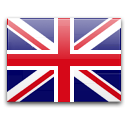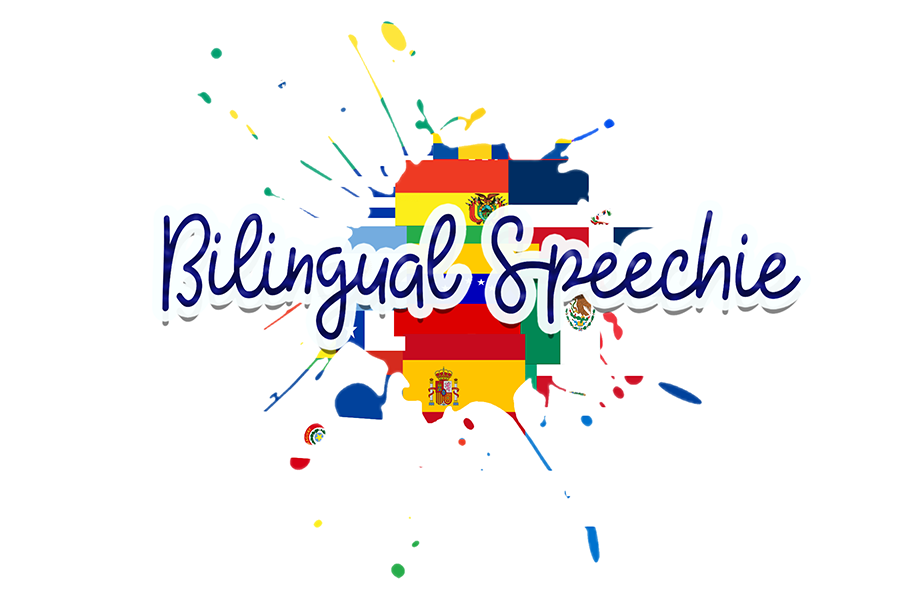by Liliana Diaz August 24, 2020 2 Comments
Growing up, I was very fortunate to have diverse teachers who came from different backgrounds. Many of my teachers were either black, Latinx, White, Asian and/or Arabic all throughout my elementary school and high school experience. Unfortunately, not many people can say they grew up having diverse teachers while in school. However, although I had many diverse teachers growing up, and as I reflect back to my childhood education, I do not recall reading stories or remembering lessons where I saw my own culture reflected upon or where I saw a mirror image of my own cultural identity being a Latina, being a Mexican-American female living on the Southside of Chicago. Unfortunately, I cannot tell you or give you an example of a book that deeply resonated with who I am because all the stories I ever read in school were about mostly white characters. At the time, I did not think much about representation in story books growing up. It wasn't a factor that bothered me growing up because I did not know better. I was not taught to question the teacher and that was the mentality that I grew up with as a kid. However, now as an adult and as I reflect upon the literature that I read growing up, I can strongly say that I believe I missed out on a lot of opportunities to learn about my own culture in the school setting. I wish I could have learned about Mexico's rich cultural history a lot sooner. I am, however, very grateful and fortunate to have two loving parents who have always taught me valuable lessons about my culture and have passed down rich Mexican traditions to me. They taught me what it means to have cultural pride. Unfortunately, not all students are fortunate to have families that are invested in embracing their own cultural practices, teachings, identities for whatever the reason may be; these are the students on our caseloads that we need to keep in mind when doing speech therapy and considering the types of materials that we are using.
The Cooperative Children's Book Center (CCBC) School of education, at the university of Wisconsin Madison, collects data on books by and about people of color. According to the CCBC, children's books depicting main characters from diverse backgrounds are lower than the number of books with main characters who are animals. The following data has been obtained from the CCBC website:
We can ensure to provide representation and inclusivity through the therapy materials that we use on a daily basis with our students. Before choosing diverse materials in therapy, there are some important points to consider when selecting the material.
Ask yourself these questions before purchasing a book or therapy material that represents a certain group of people:
As speech therapists, we are often easily influenced by the popular speech therapy books that are often talked on social media or blogs. I am guilty of using popular books like “There was an old lady who swallowed a fly, if you give a mouse a cookie, etc. Don't get me wrong, these are great books that allow SLPs to target a variety of goals. However, you can also target a variety of goals with the following diverse and multi-cultural books as well. Here are my top picks for books to use in therapy as well as language goal areas that you can target with the books.
Book Title: The Day You Begin by Jacqueline Woodson
Summary: This book is about being and feeling different and/or feeling like an outsider but accepting who you are and where you come from.
Speech Therapy Goal Areas:
Book Title: We're Different, We're the Same by Bobbi Jane Kates
Summary: This book features Sesame Street characters and people to show how we are all different but have many overall likenesses. The book demonstrates that our differences is what makes us beautiful.
Speech Therapy Goal Areas:
Book Title: Different and the Same by Adijah & Atiya Brabham
Summary: This book is about twin sisters who explore their individuality and celebrate their sameness. The book also demonstrates different activities that make them unique.
Speech Therapy Goal Areas:
Book Title: Black is a Rainbow Color by Angel Joy
Summary: This is a powerful book about a child who reflects on the meaning of being black and ties it to her culture and history. It is also about normalizing the word "black" and being proud of your identity.
Speech Therapy Goal Areas:
Book Title: Mariama: Different but Just the Same by Jerónimo Cornelles
Summary: This book is about a girl from Africa that moves to a new country where she does not know the language and is unfamiliar with the culture. It's a beautiful story about identity, the process of integration and solidarity.
Speech Therapy Goal Areas:
Book Title: Hair Love by Matthew A. Cherry
Summary: This book centers around the relationship between a black father and his daughter. It tells the story of how the father must do his daughter's hair for the first time. It's also about embracing and loving your natural hair.
Speech Therapy Goal Areas:
Book Title: Parker Looks Up by Parker Curry & Jessica Curry
Summary: This book is about a little black girl who goes to a museum and comes face-to-face with a portrait of First Lady Michelle Obama. The little girl sees the possibility and promise, the hopes and dreams of herself in the painting of Michelle Obama. It is a very symbolic book!
Speech Therapy Goal Areas:
Book Title: Under My Hijab by Hena Khan
Summary: This book celebrates the many Muslim women and girls who wear hijabs and provides an introduction to what a hijab is.
Speech Therapy Goal Areas:
Book Title: The Proudest Blue: A Story of Hijab and Family by Ibtihaj Muhammad
Summary: This is a very powerful book about a girl named Faizah on her first day of school. It's her older sister, Asiya's first day of hijab but not everyone sees hijab as beautiful, and in the face of hurtful, confusing words, Faizah finds new ways to be strong.
Speech Therapy Goal Areas:
Book Title: Monday, Wednesday, and Every Other Weekend by Karen Stanton
Summary: This book is about dealing with the many changes that come with having divorced parents. It's about a boy who lives with his mother and father on different days of the week.
Speech Therapy Goal Areas:
Book Title: Too Sticky, Sensory Issues with Autism by Jen Malia
Summary: This book is about a child who has autism and is dealing with sensory challenges. She receives help from her family and her teacher through accommodations and encouragement in order to participate in an activity that is difficult for her.
Speech Therapy Goal Areas:
Book Title: Pink is for Boys by Robb Pearlman
Summary: This is a great book that helps rethink and reframe the stereotypical blue/pink gender by emphasizing that boys can like the color pink as well.
Speech Therapy Goal Areas:
Book Title: What Riley Wore by Elana K. Arnold
Summary: This book is about a gender creative character named Riley who loves to wear whatever clothes feel right for each day. Then at the playground, the character is confronted by a kid who asks if Riley is a boy or a girl. The author doesn't assign a gendered pronoun to the character and overall the story is about normalizing the gender expressions that people can have and about being confidently nonbinary.
Speech Therapy Goal Areas:
Book Title: ¿De Dónde Eres? / Where are you from? by Camille Saied Mendez
Summary: This book is about a girl that constantly gets asked where she is from. She seeks advice from her grandfather who provides her with a very rich explanation. The story is overall about self-acceptance and cultural identity.
Speech Therapy Goal Areas:
Book Title: Alma and How She Got Her Name by Juana Martinez-Neal
Summary: This book is about a little girl named Alma Sofia Esperanza José Pura Candela who believes she has too many names. Throughout the book she learns the history that she carries with her name and to be proud of her name.
Speech Therapy Goal Areas:
Book Title: Islandborn by Junot Díaz
Summary: This book is about a little girl named Lola. She is asked at school to draw a picture of where her family immigrated from but she cannot remember because she left the Dominican Republic when she was just a baby. Her family and friends share their memories and histories, both beautiful and complex, helping Lola see that she's part of both worlds.
Speech Therapy Goal Areas:
The list can go on and on but these are definitely some of my favorite books that I always keep on my shelf at school. What are some of your favorite diverse book titles to use in speech therapy? Comment below, I would love to know!
August 30, 2021
We Move Together is a lovely addition to your wonderful list
https://disabilityvisibilityproject.com/2021/07/12/we-move-together/
September 24, 2020
I recently found the book All are Welcome, which has beautiful illustrations! This rhyming and repetitive text features the themes of diversity within the school community. It is similar to the We’re Different, We’re the Same book in that the illustrations allow readers to identify how children may appear different but are similar in many ways, such as the activities they participate in.
Comments will be approved before showing up.
by Liliana Diaz December 14, 2023
by Liliana Diaz July 23, 2023
Have a client on your caseload that is demonstrating difficulty producing the CH sound? Perhaps you're a parent whose child is in speech therapy working on the CH sound? The CH sound can be a tricky sound to teach because it's hard to visually see what's going on inside the mouth when saying the sound. But no worries, here are some tips to help achieve that tricky CH sound.
by Liliana Diaz February 13, 2023 1 Comment

Who are we?
Bilingual Speechie LLC. is a small business dedicated to providing inclusive and engaging speech therapy resources and activities for bilingual children, parents, SLPs and educators.
Bilingual Speechie LLC promotes bilingualism and multilingualism by dispelling common myths, providing education on bilingual language development, and promoting heritage language maintenance amongst bilingual families.
About the Owner:
Liliana Diaz-Vazquez is a certified licensed bilingual speech language pathologist (SLP), currently practicing in Chicago, Illinois. She obtained her bachelor’s degree in communication disorders (2012) and her master’s degree in speech language pathology at Saint Xavier University (2014). She is a certified member of the American Speech-Language and Hearing Association (ASHA) since 2014, a member of the Illinois Speech and Hearing Association (ISHA) since 2014 and maintains licensure in the state of Illinois.
Liliana is a first-generation Mexican-American Latina, a small business owner, a full-time school-based SLP, & a bilingual parent, who takes pride in her roots, culture, & heritage language. She loves being able to share her experience as a Latina SLP, and a bilingual mom, as well as her culture & heritage language with the educator, SLP, and parent community.
Liliana Diaz-Vazquez has extensive experience working with the bilingual English and Spanish speaking population & multilingual population. She specializes in augmentative/alternative communication (AAC), bilingual language development and language delays/disorders in bilingual/multilingual children. She has also worked in the early intervention setting for several years where she gained vast experience working with interpreters and bilingual/multilingual families.
Liliana began creating digital bilingual resources and activities in 2014 out of need while working full-time in the school setting as a SLP. Liliana worked with many Spanish-speaking families and quickly realized that there were limited Spanish and bilingual speech therapy resources available for her students and their families. In addition, Liliana quickly became aware that there was a need for education about bilingualism and typical bilingual language development as many of the families she worked with had encountered misinformation about bilingualism. Liliana began developing resources and eventually started Bilingual Speechie LLC with the mission to provide education to SLPs and families about bilingualism, as well as provide inclusive and diverse materials for speech therapy in order to help bilingual families and SLPs gain access to appropriate bilingual materials for children with communication disorders.
Today Liliana currently works full-time in the Chicago public school setting as a lead bilingual SLP where she consults and collaborates with SLPs daily to help them understand how to assess and provide culturally and linguistically appropriate services for bilingual and/or multilingual students. She also runs her small business, Bilingual Speechie LLC, and is on a mission to expand and grow her business so that all SLPs, educators, and families can have access to inclusive, diverse, and bilingual resources in a variety of languages for speech therapy.
Professional Development:
Liliana has vast experience as a speaker/presenter and has presented at several conferences over the years. You can view all previous conferences and topics that Liliana has presented on here. Liliana is available to present on topics such as best practices when working with multilingual populations, bilingual speech/language assessment and treatment, goal writing with multilingual populations and much more. If you are interested in booking Liliana for a conference or event please don't hesitate to send an email at lilianadiaz@bilingualspeechie.com
 English
en
English
en
 English
en
English
en
 Español
es
Español
es


Liliana Diaz
Author